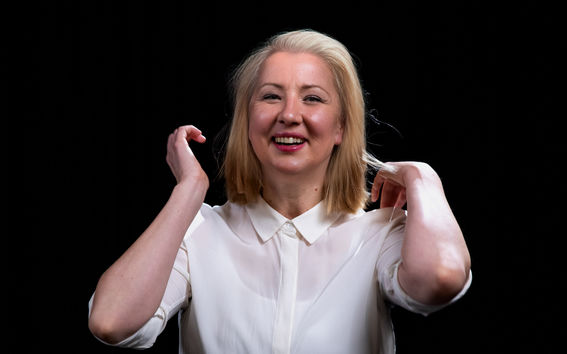AI technique captures complexity of human faces to help create realistic photo edits
Half a century ago, we expected the future to hold sophisticated computers and robot helpers to slash the time we spend on work and household chores.
Yet, while we now have nearly unlimited knowledge at our fingertips, the level of automation that some predicted still hasn’t come to be. What happened?
It turns out that things are a little more complicated than we expected.
‘It’s taken us a surprisingly long time to come to terms with how complex the world is,’ says Jaakko Lehtinen, an associate professor of computer science at Aalto University and distinguished research scientist at computer graphics firm NVIDIA.
Unsupervised learning
Lehtinen’s work focuses on Artificial Intelligence techniques that create new, realistic images, simply by looking at examples. The method has not just helped speed up tasks, which in the past could take a skilled professional days or weeks, to a matter of seconds but eliminated the need for human eyes all together.
‘Doing this without human supervision is a building block of intelligence,’ Lehtinen explains. ‘Looking at a large collection of images, the algorithm distils the essence of what it sees into a recipe, which it uses to create new images that show the same, hard-to-pinpoint laws and rules.’
With colleagues at NVIDIA, the techniques have, for example, created pictures of non-existent faces that look so eerily real, you could swear they were in the last movie you saw. Most recently, they have made their way into New Portrait tool in Adobe Photoshop, which users around the world can use to easily change the gaze, smile or even age of real faces.

Smarts for the real world
These are impressive achievements, but it’s easy to overlook the potential of this technology if we concentrate on image creation or manipulation. Lehtinen says that methods that learn to imagine what’s out there will be crucial to computer vision and robotics going forward.
‘To deal with a completely new environment, like your home or office, and all of the real-world scenarios that may occur there, a robot needs a really robust idea of what all kinds of different homes and offices look like. These techniques could finally help them deal with all that complexity.’
Watch our Way Out There episode to learn more!
This article will be published in the Aalto University Magazine issue 28 coming out in May.
Read more news

DeployAI Partners Gather for Heart Beat Meeting in Helsinki
The European DeployAI project's partners gathered for the Heart Beat meeting hosted by Aalto University Executive Education in Helsinki.
Aalto computer scientists in ICML 2024
Computer scientists in ICML 2024
In low-hierarchy organisations, even key policy issues are discussed in Slack
In a recent study, Aalto University alumn Lauri Pietinalho, a visiting scholar at New York University's Stern School of Business, and Frank Martela, an assistant professor at Aalto University, investigated how low-hierarchy organisations deal with shared policies in confrontational situations and how authority functions within them.